More About Spots
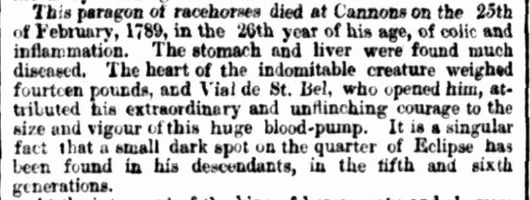
Janet Lane, 2024. Image: from The Story of Eclipse, Sydney Mail 1868.
Spots are discussed in our post Colour and Markings. This post is to supplement the information there as it will be helpful especially to those with Snowy Mountains brumbies now seeking known breeding links to Colonial times.
Quite a few Walers have Birdcatcher spots. White spots well known to be passed down through the generations from the well-known sire Birdcatcher, himself a descendant of Eclipse. Many of the early TB’s that came to Australia carried the gene, and as many were somewhat inbred I think that made it dominant with some.
Tetrarch is probably the most famous TB with those sorts of interesting markings (same lines).
Of interest, six Barb stallions of Ben Boyd’s (bought out on his ships the Seahorse and the Wanderer) were let go in the Monaro area for the India Trade and those probably contributed to Snowy brumbies having some spots, they were top class stallions.
It’s a genetic goldmine and must be preserved.
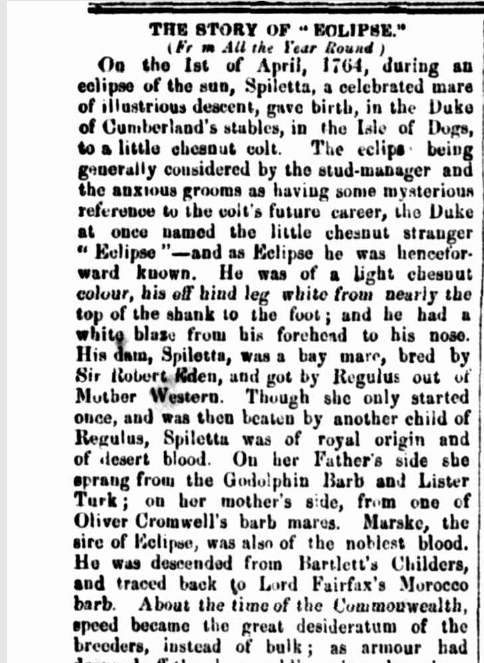
Image: The Sydney Mail, 16 May 1868.
Less well known is also a dark Birdcatcher spot, or a small patch, seen largely on the quarters of some Walers. It comes from the same source, the stallion Eclipse.
Stallion Pinjee for example has a dark spot on his offside near his back just where his mane ends. Mares Poppy and Topsy also have a dark patch (a spot can be covered by the hand, a patch is larger). We’ll call it the Eclipse Patch (in his days a patch was the name for a fake black mole ‘beauty spot’ painted on the faces of Regency ladies and gentlemen…)
I think further back it’s Barb. By then it hardly matters. The Poms and Colonials inbreeding TBs caused the gene to remain dominant in those times so our horses being in a time warp still have it as dominant in many. A sign of the old lines for want of a better term.
Images from: Blood Horses of the Colony, The Argus, 21 November 1848
Another descendant was Toss. He stood in the Hunter when it was giant unfenced runs, and he was bred to umpteen mares. He was inbred to Eclipse. His blood would be in many Snowies brumbies, so it would be interesting to know if any have Birdcatcher Spots and or the patch/large spot on the quarters.
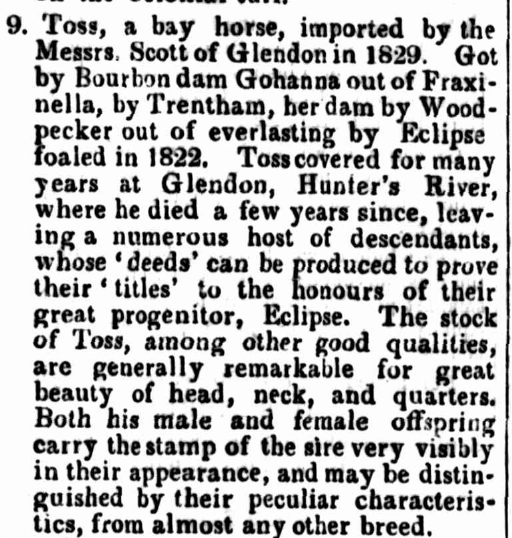
Of interest is the spotted Arab that came in, proving that spots are ancient, the Appaloosa came to Australia late, after the horse days so our spots came from older sources. This is just one example anyway, for the record.
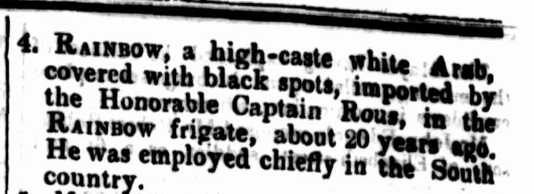
To note, the Arabs from India were real Arabs: imported there from Arabia now Iraq and Persia now Iran; so were those from Syria imported to the UK, most were pony size.
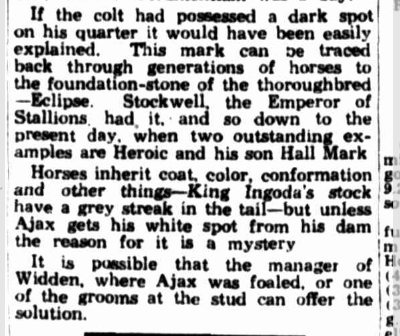
This article sums up how important it is to check for the old markings in wild caught horses. Stockwell genetics were EVERYWHERE in the early days – his blood was in all states many times over! One gets rather tired of his name in fact as it appears so often. Stockwell was even in Carbine’s ancestry!
So, these spots, patches and silver guard hairs (‘grey streak in the tail’) are in the old bloodlines i.e. many brumbies and in Walers. Please be on the lookout for them.
Image: Sporting Globe, 27 April 1938